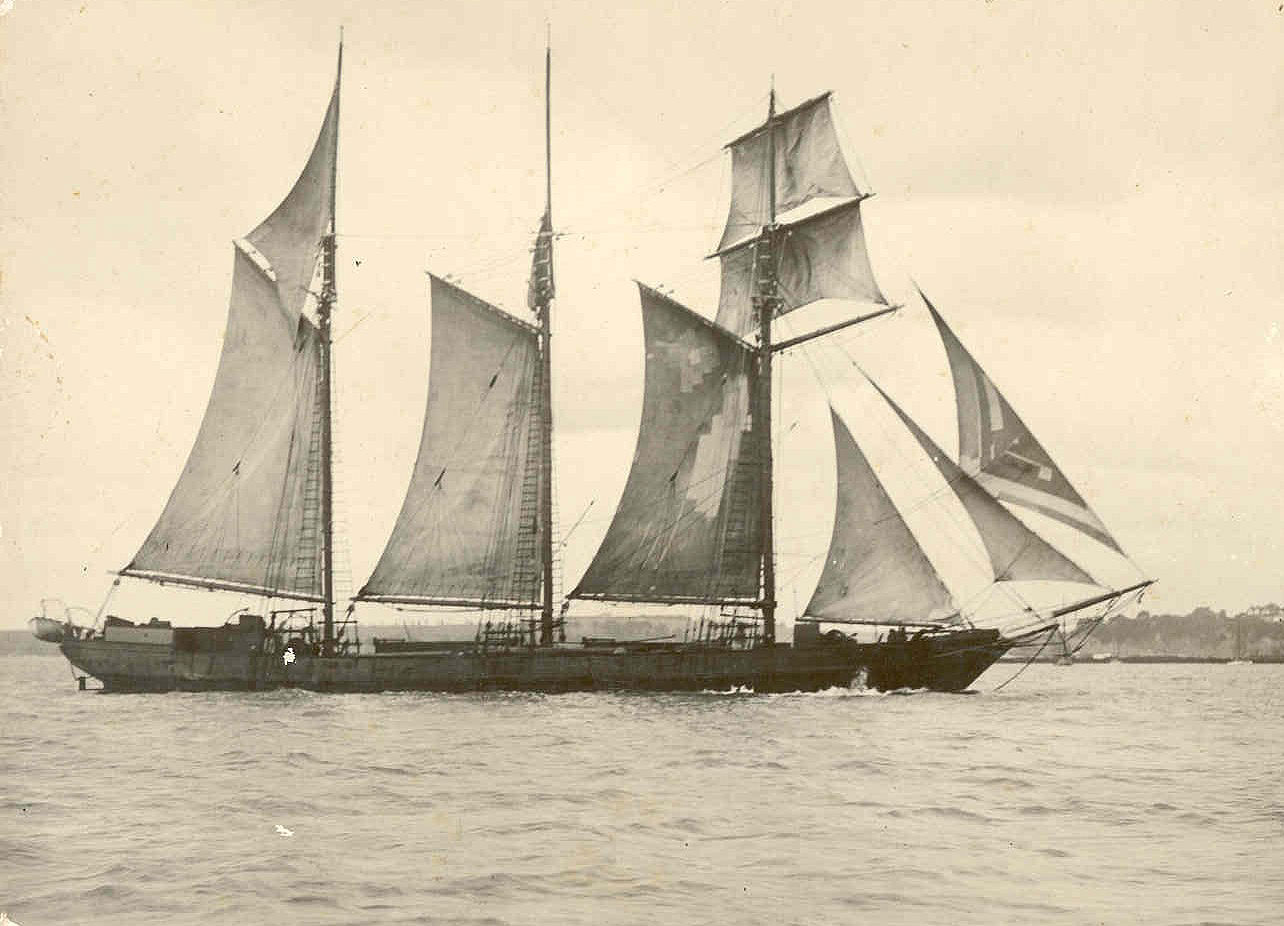Innovation a proud local tradition

Taking on the World: The largest scow built in Aotearoa, the 128-foot Zingara, was built to cross oceans. photograph Fletcher Challenge Archives
The scow builders would have approved. Their only question would have been, how could it have taken so long?
The Mahurangi was an early centre of shipbuilding. The vessels built were mostly coasting schooners and cutters—relatively shallow-draft long-keel craft that serviced the predominantly coastal and tide-reached settlements, such as Warkworth.
But there was a marked lack of maritime infrastructure; specifically, of wharfs. This combined with shallow estuaries, made shallower by deforestation.
The solution was the scow form, introduced from the Great Lakes by ‘Yankee sea captain’ George Spencer. Essentially a flat-bottomed barge, it carried its load on deck, allowing it to beach close to the shoreline and be loaded and unloaded by way of plank or parbuckle.
The first Aotearoa scow, the Lake Erie, was built in 1873, in Whangateau by John Meiklejohn. The form was sufficiently promising to be refined, principally by losing the square bow and leeboards in favour of an angled bow and centreboard, or boards.
By 1925, 140 scows of varying sophistication and size had been build. The largest, was the 128-foot three-masted ocean-going topsail schooner Zingara. She could carry 170 000 board-feet of timber, in her hold, to Australia.
The scow-building area arrived too late to revive the once illustrious Mahurangi shipbuilding industry. The Lady of the Lake and Lake St Clair were amongst the last dozen of the 75 vessels built in the harbour. The burgeoning scow era belonged to Ōmaha and Auckland.
Until recently, of course, with the re-building of the Jane Gifford at Warkworth. She’d been built in Ōmaha, in 1908, in the heyday of the scows, Warkworth later becoming her homeport.
The scows were an indigenous response to a desperate need for transport in a muddy region served by few and poor roads and few deepwater landings. Despite steam being in the ascendancy, the scows initially, relied solely on sail. Dr Ronald Locker:
The scows succeeded in the face of steam by taking on the donkeywork: logs, coal, firewood, sand and shingle, cement and cattle.
Innovation was key. These shipbuilders turned their back on generations of plank-on-frame shipbuilding tradition to build something less pretty but far more practical for the work at hand.
So there is a nice continuation of the tradition of innovation, with the building in Warkworth of catamarans for the new-look America’s Cup.
Locally and worldwide, there will be great lamenting by folk for the loss of America’s Cup tradition. But students of the America’s Cup, and of yacht design generally, won’t be having a bar of it.
The America’s Cup is named for the schooner America, which would not have looked too out of place on a Mahurangi slipway, when she was built in 1851. The America became a phenomenon when she cleaned up at Cowes, that year. Her comprehensive trouncing of the best of Britain’s yachts highlighted the advances made in the design of commercial sailing craft in North America—she was not the outcome of an inbred racing yacht form, she was workhorse-derived. This was an era before yachting was seen as an acceptable American pursuit—yachting there was associated with British decadence.
But while the founding concept of the cup was design innovation, those unaware of its history have, at times, tended to think the tradition it is about the class of boats they were personally familiar with: The International America’s Cup Class, the Twelve-Metre Rule, the legendary J-Class, and before that, the Seawanakha Rule.
Michael Fay’s 1988 ‘big boat challenge’ was seen as an aberration. It was, but only to the extent that the challenge was not met with like form. The America’s Cup deed of gift, reflecting the revolutionary circumstances of the Cowes clean sweep, enshrined in the right of a challenger to come at the defender with their best design. Nothing about how many masts, how long, how wide or how many hulls.
Had Dennis Conner wished to introduce multihulls, he would have been within the spirit of the deed of gift to challenge with such, as did Larry Ellison in February, triumphantly. The big boat versus catamaran was a farce; a mean-minded no-contest.
Adoption of the likes of the AC72 Rule is long overdue. From 1893 to 1920, Captain Nathanael Greene Herreshoff designed the America’s Cup defenders Vigilant, Defender, Columbia, Reliance and Resolute. He also designed catamarans:
The nondescript, half-catamaran, half-balsa and wholly life-raft constructed by Mr Herreshoff, of Providence, whether ruled out by the judges or counted in, can justly claim to be the fastest thing of her inches under canvas that floats, and it is doubtful if there are any steamers of her size that could out-speed her in a straight reach with the wind abeam.
The 33-foot Amaryllis was not, of course, an America’s Cup defender. Herreshoff gave up on catamarans when nobody would compete with him after the Amaryllis repeated at Coney Island what the America did at the Isle of Wight. A ninety-year lag followed Herreshoff’s demonstration, not addressed until foam surfboard pioneer Hobart Alter began mass-producing catamarans. Given its Polynesian sailing heritage, it entirely fitting that Aotearoa is playing such a significant role in multihull building.
Racing slowly, is an oxymoron. In contrast, as Russell Coutts said:
We need to have the best sailors in the world racing the coolest and fastest boats in the world.
Now for a demonstration of the interim AC45 Rule catamarans at the Mahurangi Regatta…
